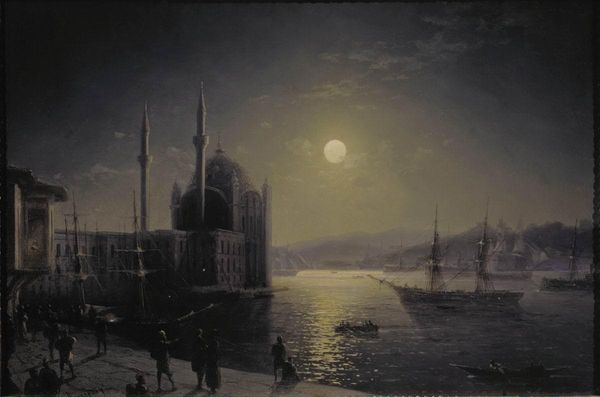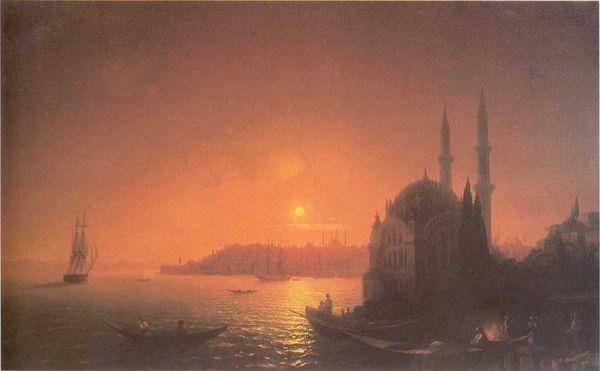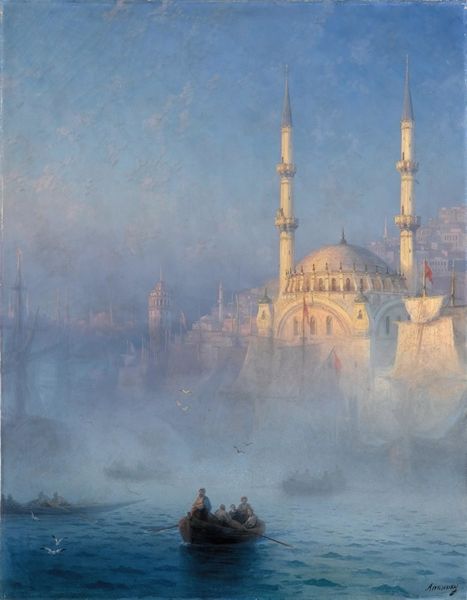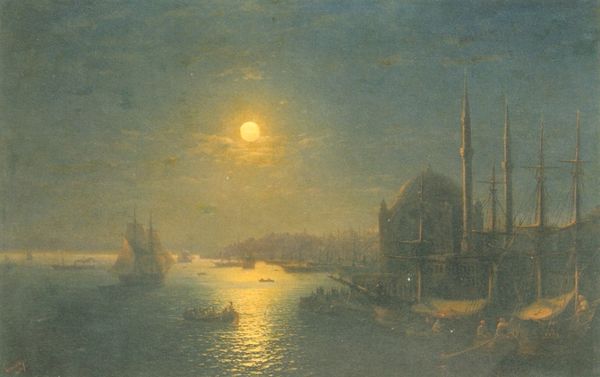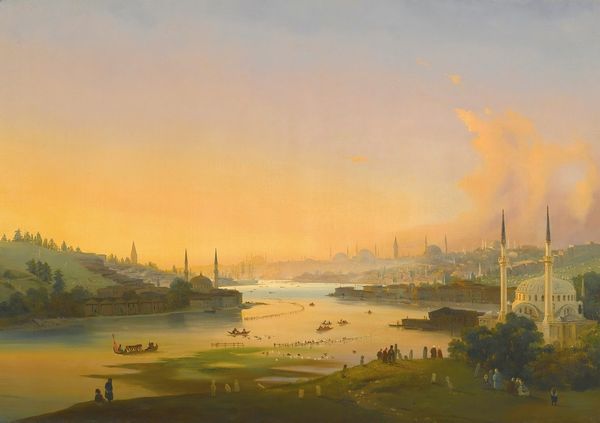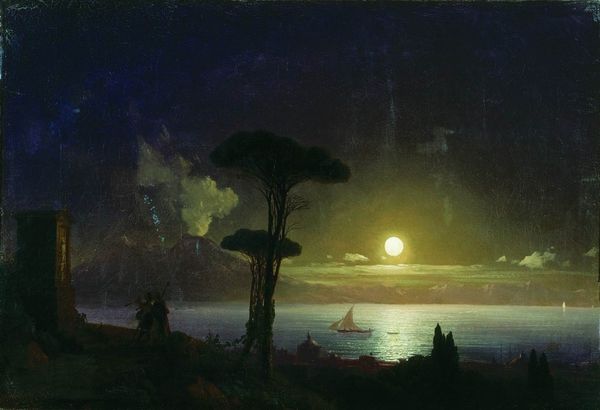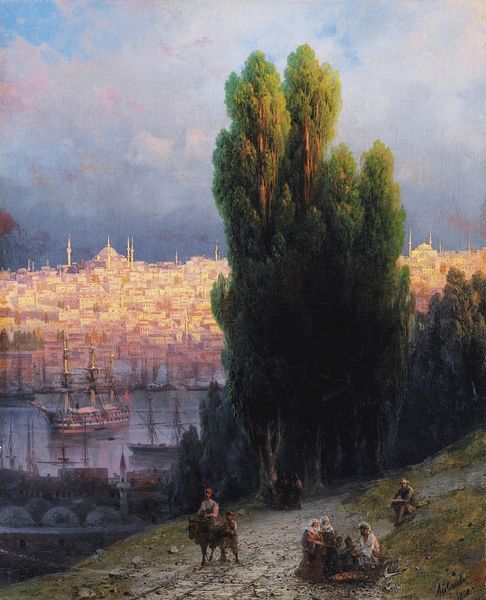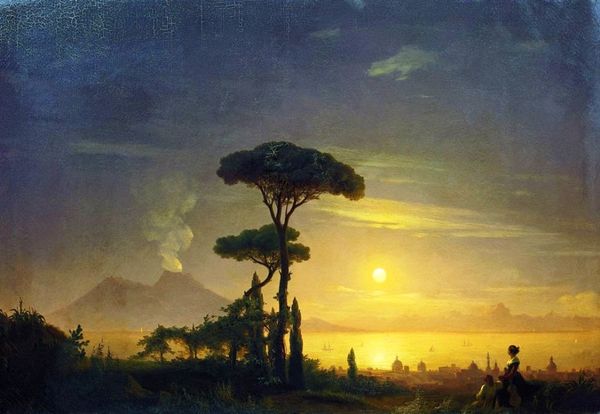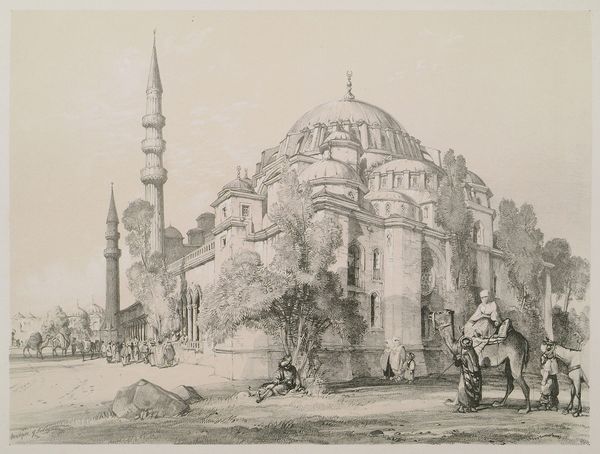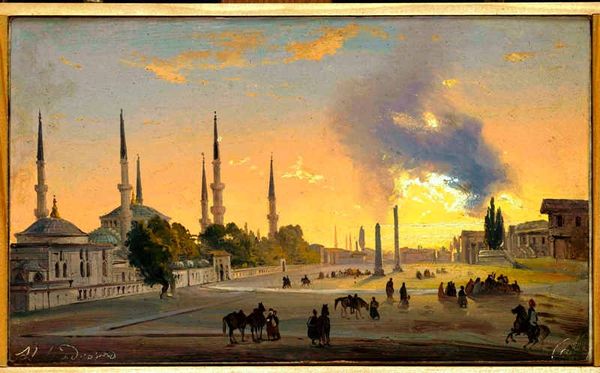
painting, oil-paint
#
night
#
sky
#
painting
#
oil-paint
#
landscape
#
figuration
#
ocean
#
romanticism
#
orientalism
#
cityscape
#
sea
Copyright: Public domain
Curator: What a dramatically lit scene! It feels like a stage set, doesn't it? Editor: It does. We're looking at "Moonlit Night Beside the Sea" by Ivan Aivazovsky, painted in 1847. The cool blues of the water are striking against that blazing yellow moon. I wonder about Aivazovsky's access to those pigments, and the role industrial production played in making such a dramatic contrast accessible to a wider audience. Curator: The composition clearly caters to a European fascination with the Orient at the time. This almost theatrical portrayal of what appears to be Constantinople is steeped in Romantic ideals and carefully curated exoticism. You can imagine how this imagery reinforced power dynamics. Editor: Absolutely, and look at the layering of the oil paint – especially in the sky. He must have worked quickly, building up the luminosity with successive glazes. Aivazovsky's skill at manipulating the material creates such depth. You can almost feel the humidity in the air and he's famous for never actually painting from life, this is memory and mastery of craft right here. Curator: It's interesting you say "mastery." What do you make of Aivazovsky's widespread popularity and institutional validation juxtaposed against accusations of repetitiveness, even painting almost the same view of Istanbul across his career? Was he cleverly manufacturing what his audience demonstrably wanted, or simply beholden to the artistic expectations and cultural biases of the Russian court? Editor: Maybe it’s a bit of both? There are socio-economic factors to consider – the art market, commissions. To produce that many canvases… how many assistants were helping prime, underpaint? It raises questions about labor in the 19th century art world. Did industrial capitalism just drive up artistic output beyond the pale? Curator: It definitely offers some insights into the artist’s choices and artistic processes. Editor: Exactly. Focusing on these more granular details allows us to ask crucial questions about labor and how those market forces informed our understanding of Romantic art and of course, images of Orientalism at this time.
Comments
No comments
Be the first to comment and join the conversation on the ultimate creative platform.
